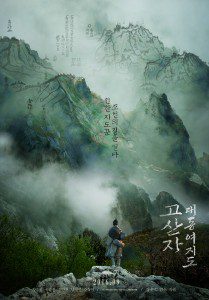In the middle of the nineteenth century a geographer and cartographer, Kim Jeong-ho presented the imperial regent Daewongun with his most elaborate map yet, an incredibly detailed and accurate rendition of the entire Korean peninsula. What happens next is disputed. Perhaps angered by the revelations of military installations he was promptly thrown into prison, and died soon after. Or, maybe not.
There are extremely few facts that are known about Kim Jeong-ho, also known by his literary sobriquet Gosanja. A couple more facts are reasonably inferred. While the rest, well, that’s the stuff of legend. And he deserves legends. His accomplishment was amazing, probably involving him personally walking the entire country at one point or another. The fact he no doubt overcame the rigid social restrictions of that time and place in order to do what he did hints at an intellect, and a personality that was outsized, and maybe threatening to many. Of course, we don’t know. So, legends begin to fill in the story.
And with that we get the movie, which Jan and I went to see yesterday evening.
Here I realize just how much I usually rely upon Rotten Tomatoes and to lesser degree other movie review aggregators for details. There are virtually no reviews of this movie in English, and what few there are rank with my own amateurish efforts. So, here’s the best summarizing I can do without those professional assists.
The Gosanja: Dae-Dong-Yeo Ji-Do, the Map Against the World is a Korean film written by Choi Jung-Mi, based upon the novel by Park Bum-Shin, directed by Woo-Suk Kang and featuring Seung-Won Cha as the cartographer, Kim In-Kwon as his long suffering apprentice, Nam Ji-Hyun as his daughter, and Shin Dong-Mi who was the cartographer’s daughter’s guardian during his long absences and vaguely his romantic interest.
The story woven out of the novel gives Jeong-ho his motivation when his father dies due to an inaccurate map. And with the he has his life long obsession. The film is beautiful. It also gives us insight into the manufacture of woodblock printing and particularly woodblock map making.
The story moves along in a pretty direct way. Beautiful backgrounds. The people, the ordinary people just trying to get along. Government officials are corrupt when they’re not outright evil. More gorgeous backgrounds. Machinations. Persecutions. Some nasty stuff. And, a sufficiently ambiguous ending to hint at the real lack of certainty about the real person’s ultimate fate.
As a child born at the dawn of our new hybridizing East and West, North and South, I had no particular problem with the Western style score in an otherwise completely Korean film. But, I do wish it wasn’t quite so bombastic.
I’m not sure how to summarize my experience. Mostly I enjoyed the film. There was what I thought of as a little Christian propaganda thrown in, I guess moving the plot along, but largely seemed to serve an unrelated agenda. But, hey, it isn’t my story.
I felt entertained enough, informed enough, and I’m pretty sure, misled at the same time. Probably enough. All in all not a bad mix in a movie.
So, with some hesitations, at least one thumb’s up. If it appears in your area, I think it is worth seeing…













